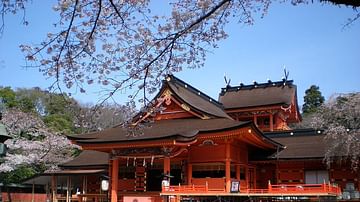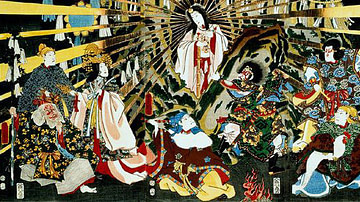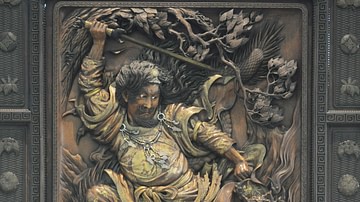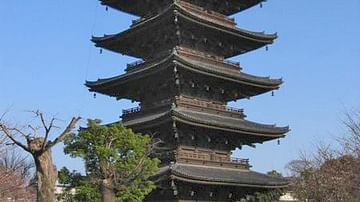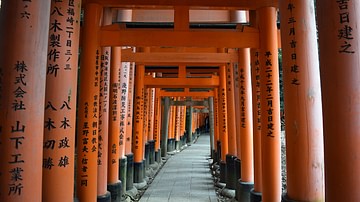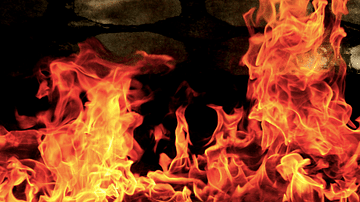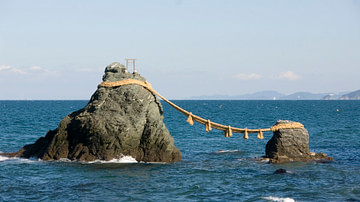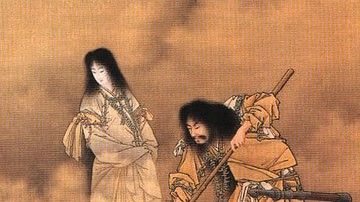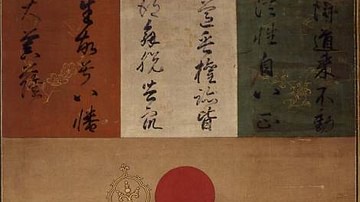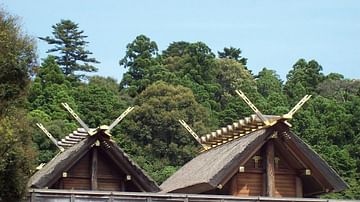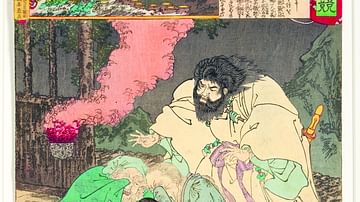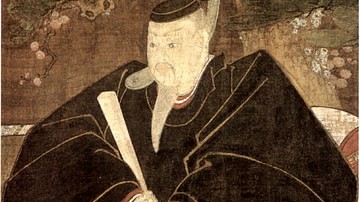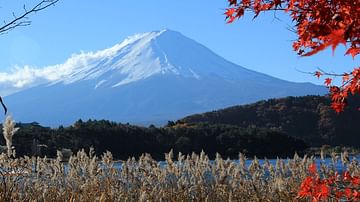Shinto is the oldest religion in Japan and has become an integral part of that country's culture whether it be in daily worship and ritual, the famous tourist site shrines or the appearance of Shinto characters in contemporary comics and films. Curiously, the religion has no founder, prophets or sacred texts, but there are certainly many gods and spirits, perhaps more than in any other religion because Shinto belief holds that even striking geographical features such as mountains and lakes can have within them a divine spirit or kami. In addition, many Buddhist deities have become established members of Shinto's vastly varied cast of supernatural beings. Worshipped at shrines where offerings are given and ceremonies performed in their honour, kami are appealed to and appeased so that the key concepts of the religion might be attained: purity, harmony, family respect, and subordination of the individual to the group.
In this collection, we look at some of the more colourful figures from the Shinto story as retold in seminal works like the Nihon Shoki, examine the particular architectural features common to shrines and sacred places like the Ise Grand Shrine, and discover some of the revered historical figures who have made the leap into sainthood and immortality in Japanese culture.
Izanagai no Mikoto and Izanami ni Mikoto stood on the floating bridge of Heaven, and held counsel together, saying: “Is there not a country beneath?” Thereupon they thrust down the jewel-spear of Heaven, and groping about therewith found the ocean. The brine dripped from the point of the spear coagulated and became an island which received the name of Ono-goro-jima.
(The Creation of Japan, Nihon Shoki)


